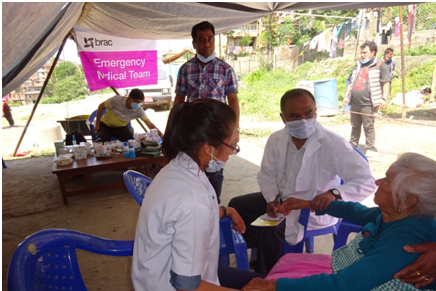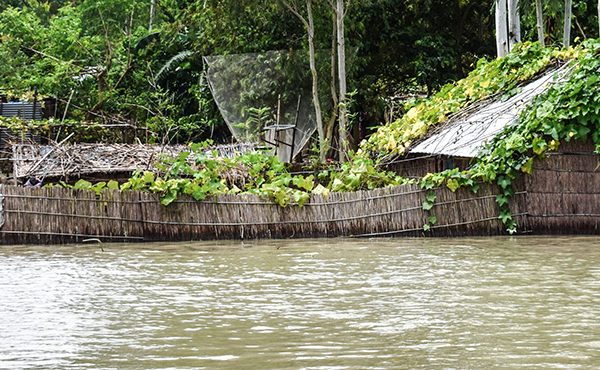Reading Time: 2 minutes
A young woman in her mid 20s is shoveling debris of a completely ruined house, as her mother looks on. The older woman spots the camera and says, “Look they are taking your picture, smile!” Prior to the earthquake, the family of six used to live in a two-storied house. Now the parents along with the daughter live in a dome-shaped temporary shelter built of CGI sheet, while the son lives with a cousin. The father is a sculptor at a local shop and the mother works in a small farm they own. “We are alive and safe, but our house is gone,” says the mother.
A young woman in her mid 20s is shoveling debris of a completely ruined house, as her mother looks on. The older woman spots the camera and says, “Look they are taking your picture, smile!” Prior to the earthquake, the family of six used to live in a two-storied house. Now the parents along with the daughter live in a dome-shaped temporary shelter built of CGI sheet, while the son lives with a cousin. The father is a sculptor at a local shop and the mother works in a small farm they own. “We are alive and safe, but our house is gone,” says the mother.
Stories like these are all too common in Nepal. Months after the devastating earthquake that killed more than 9,000 and injured more than 20,000 people, the country is still struggling to regain its infrastructure. A tremendous aid effort was seen on the ground. BRAC, with its roots in relief and rehabilitation work, was also quick to respond.
 On 29 April, an emergency response operations team of six members was sent to Nepal with essential medicines, food and equipment for those affected. Medical services were provided through camps in the remote villages of Dolekha, Bhaktapur, Sindupalchowk, Lalitpur and Kathmandu districts. The team also worked at the internally displaced persons (IDP) camps in various locations across the valley of Kathmandu. It assessed the immediate loss and damages in order to recommend the next steps.
On 29 April, an emergency response operations team of six members was sent to Nepal with essential medicines, food and equipment for those affected. Medical services were provided through camps in the remote villages of Dolekha, Bhaktapur, Sindupalchowk, Lalitpur and Kathmandu districts. The team also worked at the internally displaced persons (IDP) camps in various locations across the valley of Kathmandu. It assessed the immediate loss and damages in order to recommend the next steps.
Consecutively BRAC raised USD 1.5 million from a day’s salary of all its staff and from its own funds. This will be used to build 400 permanent houses that will be able to withstand the rage of monsoon and the shock of approaching winter.
No stranger to rehabilitation efforts, BRAC had its humble start as a relief operation in 1972 in a war-torn Bangladesh. It reached out to those affected foremost by famine and drought. BRAC slowly grew from its experience in reaching out to disaster-ridden regions. Each time, it moved on from the initial relief interventions to a sustainable, bottom-up economic development targeting those most affected.
Its first international humanitarian effort began in Afghanistan in 2002 to help the millions of refugees returning home after the US invasion. BRAC then took its expertise to Sri Lanka in 2005 in the wake of the Tsunami. After the initial relief work, there was a need to develop economic sustainability for those affected in the long term. BRAC had the experience; it stepped up its efforts, expanding into the fields of livelihood and capacity development.
In 2010, BRAC responded to Haiti, setting up a Limb and Brace Centre after the country suffered a devastating earthquake. Sir Fazle, founder of BRAC had then observed that BRAC’s experience in operating relief and rehabilitation programmes in post-conflict and post-disaster situations could be an asset to Haiti.
As the debris of the 7.9 magnitude earthquake settles, the long-term challenges of the devastation now become evident.
BRAC is gearing up to provide health, education, livelihood, disaster risk reduction, and WASH interventions in Nepal, so that the Nepalese people can once again go back to building their lives one block at a time.
Syeda Samara Mortada is senior lead, Communications, BRAC International. Sheetal Tuladhar is a BRAC USA Fellow currently based in Nepal.






